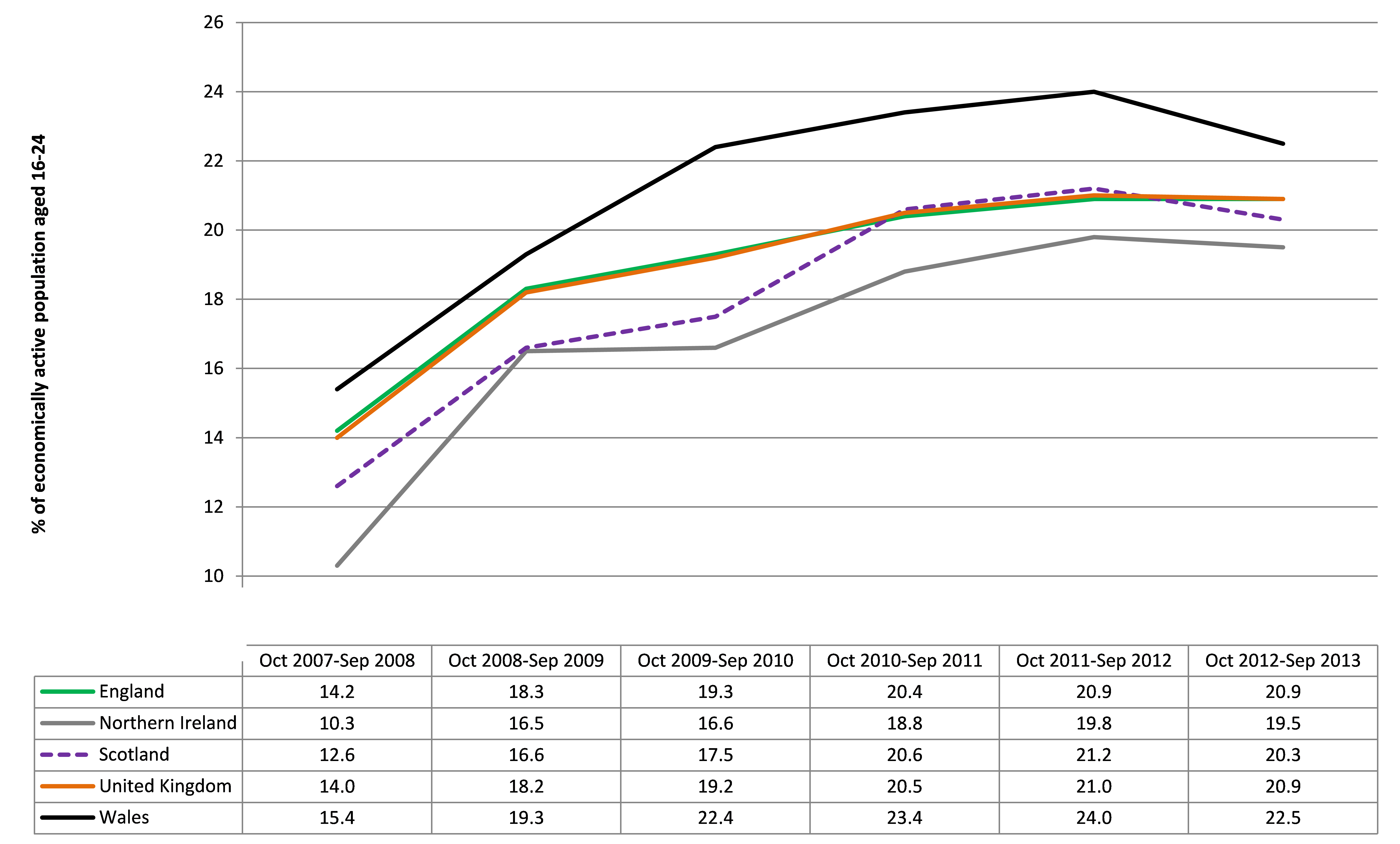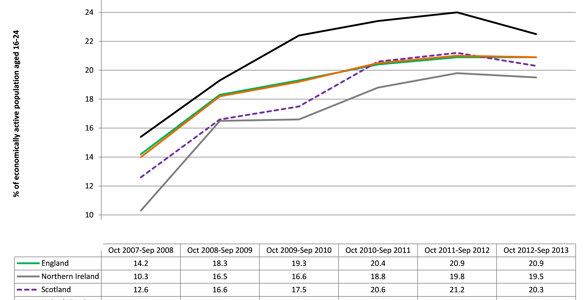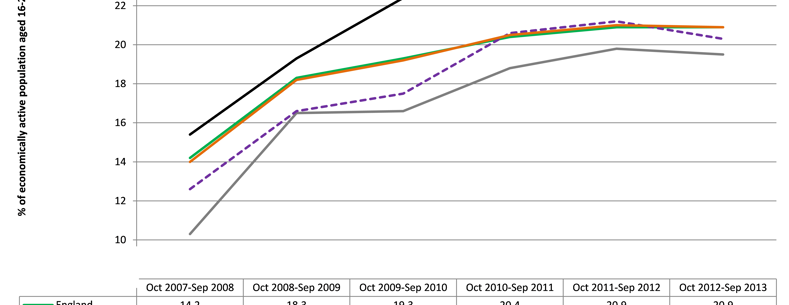Article by Gareth Thomas and Michael Dauncey, National Assembly for Wales Research Service
Updated figures for Wales have recently been published in relation to youth unemployment and young people not in education, employment or training. The youth unemployment data was published on 22 January as part of the Office for National Statistics’ Regional Labour Market Statistics release for January 2014. The International Labour Organisation (ILO) youth unemployment rate is the number of ILO unemployed persons as a percentage of the economically active population aged between 16 and 24. It is the primary measure of youth unemployment. People who are ILO unemployed include those who are out of work and want a job, have actively sought work in the last four weeks and are available to start work in the next two weeks; plus those who are out of work, have found a job and are waiting to start in the next two weeks. The latest statistics show that in October 2012 – September 2013, 48,400 people aged 16 to 24 were ILO unemployed in Wales.
- The ILO unemployment rate in Wales for the 16 to 24 age group is currently 22.5%, which is the highest of the UK nations. Figure 1 shows this has been the case over the last five years, and that the youth ILO unemployment rate for Wales is 7.1 percentage points higher than in October 2007 – September 2008 (the UK entered recession in the second quarter of 2008, and was in recession from the third quarter of 2008).
- However, over the past year the youth ILO unemployment rate in Wales has decreased by 1.5 percentage points, more than in any other UK nation.
[caption id="attachment_1380" align="alignnone" width="625"] Figure 1: ILO unemployment rates for people aged 16 to 24 in UK nations[/caption] Source: Office for National Statistics, NOMIS – Official Labour Market Statistics Meanwhile, the latest quarterly statistics on young people not in education, employment or training were published by the Welsh Government on 16 January 2014. These statistics are slightly different to the youth unemployment statistics for the reasons outlined below:
Figure 1: ILO unemployment rates for people aged 16 to 24 in UK nations[/caption] Source: Office for National Statistics, NOMIS – Official Labour Market Statistics Meanwhile, the latest quarterly statistics on young people not in education, employment or training were published by the Welsh Government on 16 January 2014. These statistics are slightly different to the youth unemployment statistics for the reasons outlined below:
- Young people not in education employment or training includes people who are unemployed plus other groups such as people who are economically inactive due to having an illness or disability, or people looking after their family. The rate of young people not in education, employment or training is calculated as the percentage of all people aged between 16 to 18 and 19 to 24.
- The ILO youth unemployment rate is calculated as the number of ILO unemployed people aged 16 to 24 as a percentage of the economically active population within that age group (i.e. those who are in employment or ILO unemployed).
The latest figures on young people not in education, employment or training are taken from the Annual Population Survey (APS). They are based on a smaller sample than more robust figures published annually by the Welsh Government in a Statistical First Release (SFR) each July but provide more timely statistical data. The most recent statistics, which are for the year ending in quarter 3 of 2013, show a fall in the number and rate of young people who are not in education, employment or training for both the 16-18 and 19-24 age ranges, compared to the year ending in quarter 3 of 2012.
- 12,900 (11.9%) 16 to 18 year olds were not in education, employment or training in the year ending in quarter 3 of 2013. This compares to 14,400 (12.7%) in the year ending in quarter 3 of 2012, and 14,600 (12.2%) in the year ending in quarter 3 of 2008.
- 51,300 (21.4%) 19 to 24 year olds were not in education, employment or training in the year ending in quarter 3 of 2013. This compares to 56,800 (22.9%) in the year ending in quarter 3 of 2012, and 40,600 (16.9%) in the year ending in quarter 3 of 2008.
The Welsh Government has said that reducing the numbers of young people who are not in education, employment or training is a top priority and in October 2013 published its Youth Engagement and Progression Framework Implementation Plan. For further information, the following documents may be of interest:
- Office for National Statistics, Regional Labour Market Statistics January 2014
- Research Service, Unemployment Briefing January 2014
- Welsh Government, Young people not in education, employment or training (NEET), Year to September 2013
- Research Service, Young People Not in Education, Employment or Training (published September 2013)
- Institute of Welsh Affairs, A Real Citizens Service for Wales






